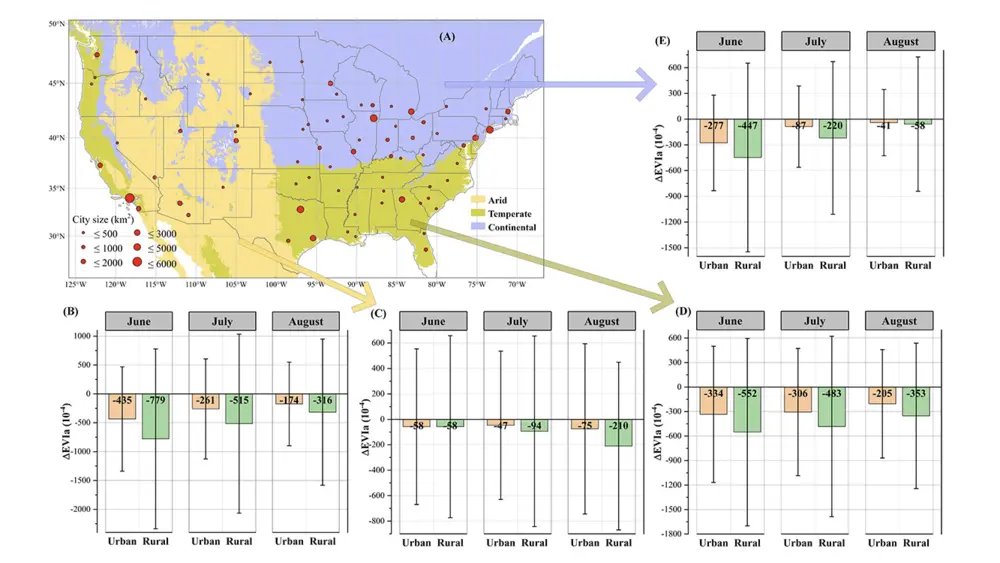
“We are trying to understand photosynthesis on a broader scale by looking at urban ecosystems,” said Peng Fu, postdoctoral researcher and member of the Realizing Increased Photosynthetic Efficiency (RIPE) project team who is lead author of the study. “Cities are a unique environment in that we can see elevated temperatures, air pollution and variation in these variables along cities and neighboring rural regions. We looked at whether we could leverage this unique environment to understand the impact of the different environmental factors on vegetation growth.”
Plant biologists at Illinois utilize facilities such as the free-air CO2 enrichment (FACE) facility to study the impact of different global change factors on vegetation growth. However, controlling environmental factors can be difficult and maintaining such facilities can be costly. For this study, Fu used his expertise in remote sensing to extend previous work done in FACE facilities and apply it to urban environments.
“Long-term remote sensing datasets can be used in combination with FACE experiments to better understand how atmospheric changes in combination with climate impact plant productivity,” said Lisa Ainsworth (CABBI/GEGC), the Research Leader of the US Department of Agriculture (USDA) Agricultural Research Service (ARS) Global Change and Photosynthesis Research Unit and co-author of the study.
A combination of remote sensing and publicly available datasets were used in the study, which was recently reported in the journal Environmental Research Letters. Fu and researchers focused on urban-rural gradients spanning 18 years in the conterminous United States, analyzing 75 urban-rural pairs that represented different sizes and climate zones.
“We looked at vegetation growth in non-drought and drought conditions and quantified the difference between the two, which is what we call the vegetation drought resistance,” said Fu. “If there is a smaller difference, that means it has a better ability to deal with the drought.”